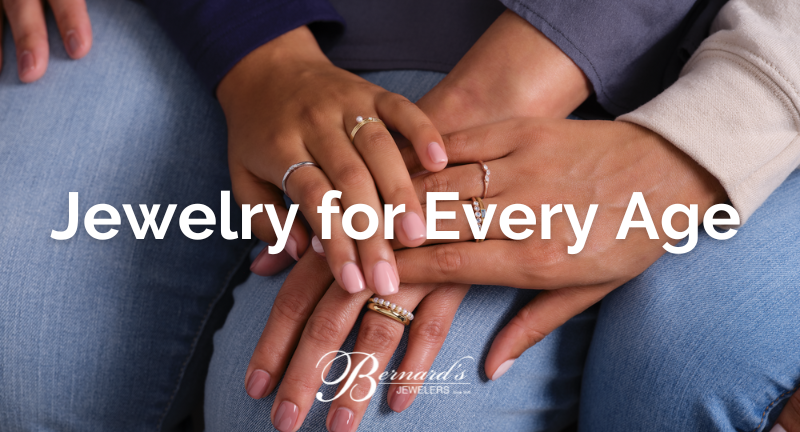Diamonds
Before You Buy, Know the 4 C’S of Diamonds.
Cut
The diamond’s cut refers to the angles and proportions of a diamond. The cut of a diamond pertains to the exact proportions, quality of polish and the arrangement of a diamond’s facets. While nature regulates a diamond’s clarity, carat weight and color, the skills of a master craftsman is essential to bring out the diamonds’ fire and sparkle.


Clarity
A diamond’s clarity refers to the presence of inclusions in a diamond. Inclusions are natural distinguishing characteristics such as minerals or fractures, that are created when diamonds are being formed. They may appear as tiny crystals, clouds or feathers. Inclusions are commonly viewed at 10x magnification. The position of inclusions can greatly affect the value of a diamond. Some inclusions can be hidden by a mounting, thus having little effect on the beauty of a diamond. An inclusion in the middle or top of a diamond could affect the dispersion of light, causing the diamond to be less brilliant. Inclusions are ranked on a scale of perfection called the clarity scale. The scale ranges from F (Flawless) to I (Imperfect) and is based on the visibility of inclusions at 10X magnification.


Color
The color of a diamond refers to the degree to which a diamond is colorless. The farther from colorless that a diamond’s grade is, the more common and therefore less valuable it is. The Gemological Institute of America (GIA) grade diamonds on a scale they established, which ranges from D (Colorless) to Z.


Carat (Size)
A diamond’s weight is measured in what is known as a “carat”, which is a unit of measurement equal to 200 milligrams. Carat is not a measure of a diamond’s size, but instead is a measure of a diamond’s weight. One carat can also be divided in 100 points. A .75 carat diamond is the equivalent to 75 points or 3/4 carat diamond. Larger diamonds are more valuable because they are less commonly found in nature. Therefore, the value of a 1 carat diamond will be more than twice that of a 1/2 carat diamond, assuming other qualities are similar


Lab Diamonds v. Natural Diamonds
What’s the difference?
Lab diamonds (also known as man-made or synthetic diamonds) and natural diamonds have the same physical, chemical, and optical properties. They are both considered real diamonds. This is because they are both made of carbon and are arranged in the same crystal structure. Here are the differences between the two.
Origin:
-
- Lab Diamond: Created in a controlled laboratory environment using advanced technological processes like High Pressure High Temperature (HPHT) or Chemical Vapor Deposition (CVD).
- Natural Diamond: Formed deep within the Earth’s mantle over billions of years under high pressure and temperature.
Production Process:
-
- Lab Diamond: Can be produced in a matter of weeks or months using either HPHT or CVD methods.
- Natural Diamond: Requires volcanic eruptions to bring them closer to the Earth’s surface, from where they are mined.
Price:
-
- Lab Diamond: Typically less expensive than natural diamonds of similar quality because of lower production costs and no mining expenses.
- Natural Diamond: Usually priced higher due to mining costs, long supply chains, and perceived value associated with rarity.
Inclusions and Imperfections:
-
- Lab Diamond: Inclusions in lab diamonds might be different from those found in natural diamonds. Some lab diamonds may have inclusions unique to their production process.
- Natural Diamond: Contains inclusions or imperfections (like feathers, pinpoints, clouds) that have occurred naturally over time.
Identification:
-
- Both types can be differentiated using specialized equipment. For the naked eye or even under a jeweler’s loupe, it is often very difficult to tell them apart due to their identical properties.
Read Articles about Diamonds on Our Blog
What to Know When Shopping for an Engagement Ring
Shopping for an engagement ring is an exciting and meaningful experience, but it can also be overwhelming for those who are unfamiliar with the process. Here are a few key things to know when shopping for an engagement ring. Budget Before you start shopping, it...
Jewelry for Every Age
Jewelry can make a great gift for women of all ages, but not every piece of jewelry is right for all ages. Here are some tips on what to look for based on the age group you are buying for. The Teenage Years When buying jewelry for your teen girls look for...
Wedding Day Jewelry Tips
Weddings are special moment in life, with much planning and preparation this a day that everyone hopes to be magically perfect. Part of this magical day is the perfect jewelry that completes your wedding look. We have a few tips to help you find the perfect...




